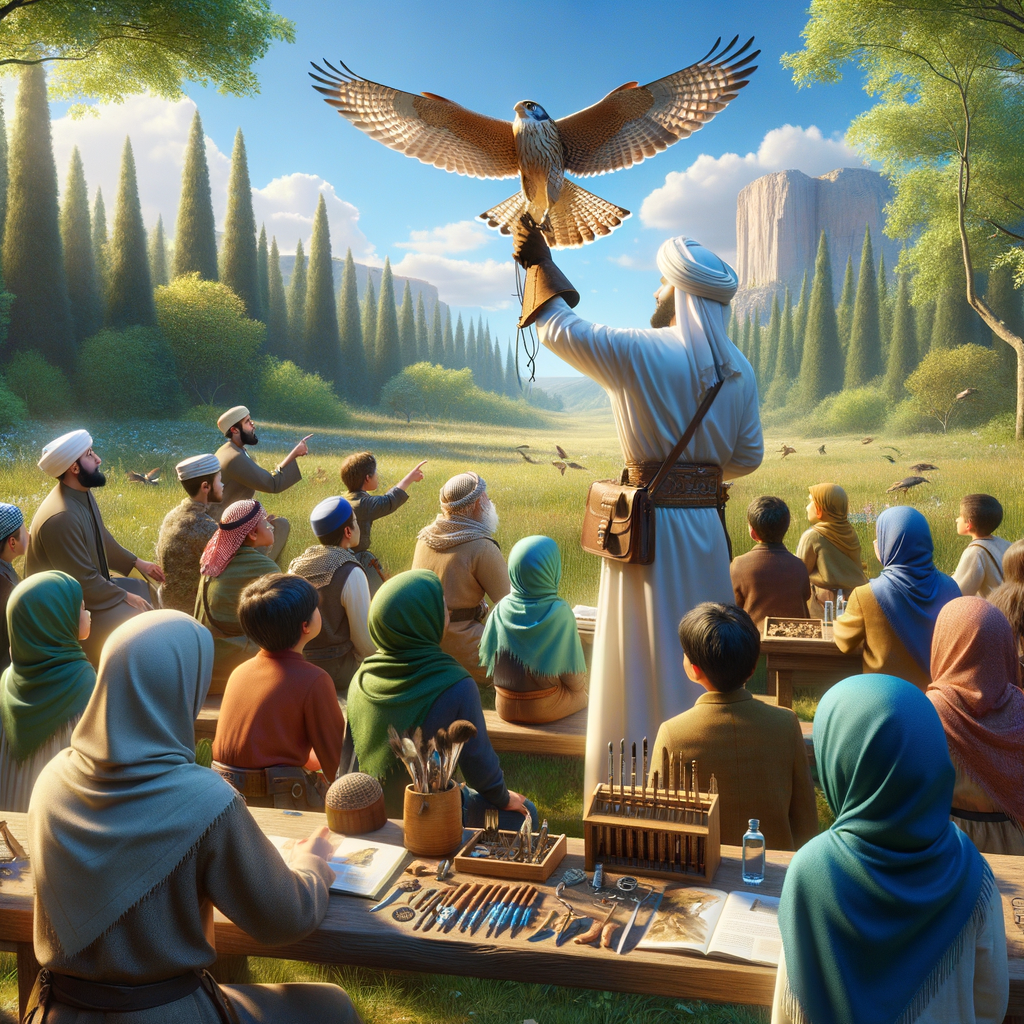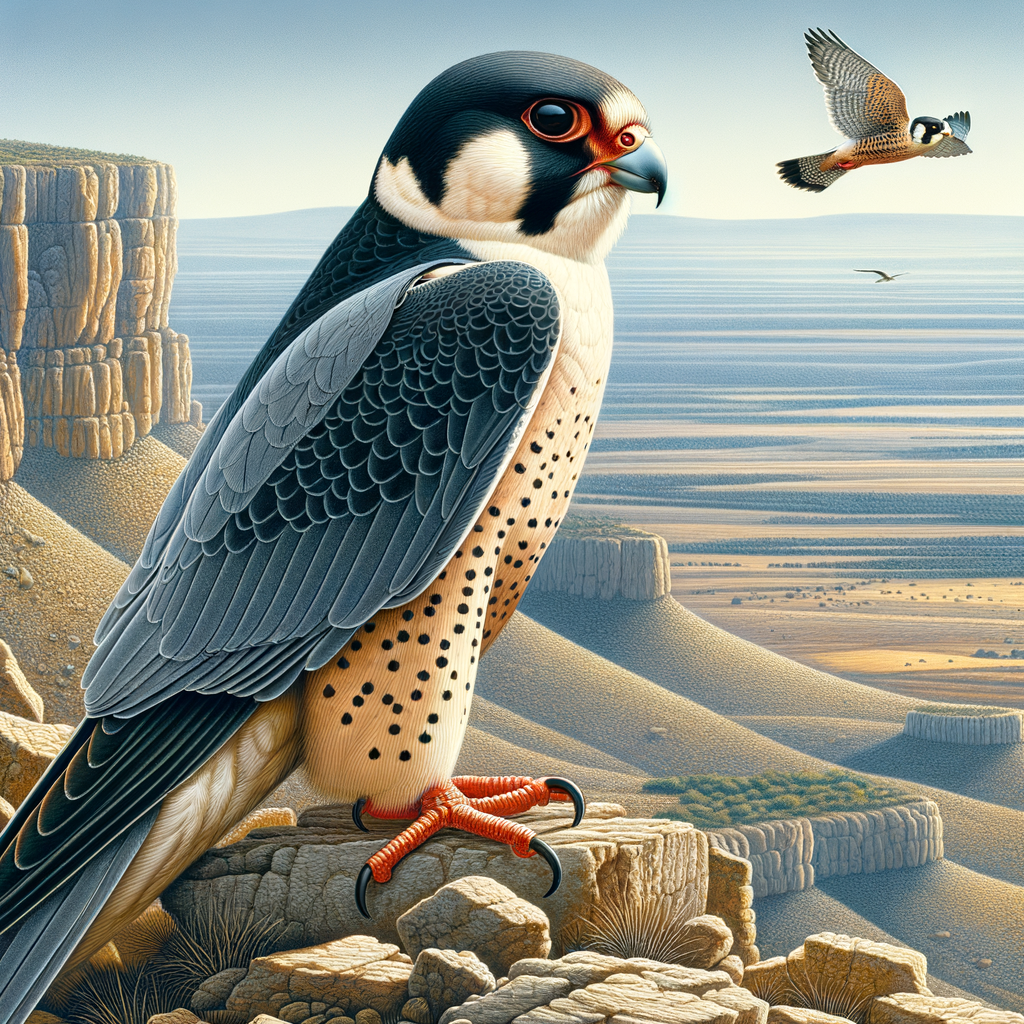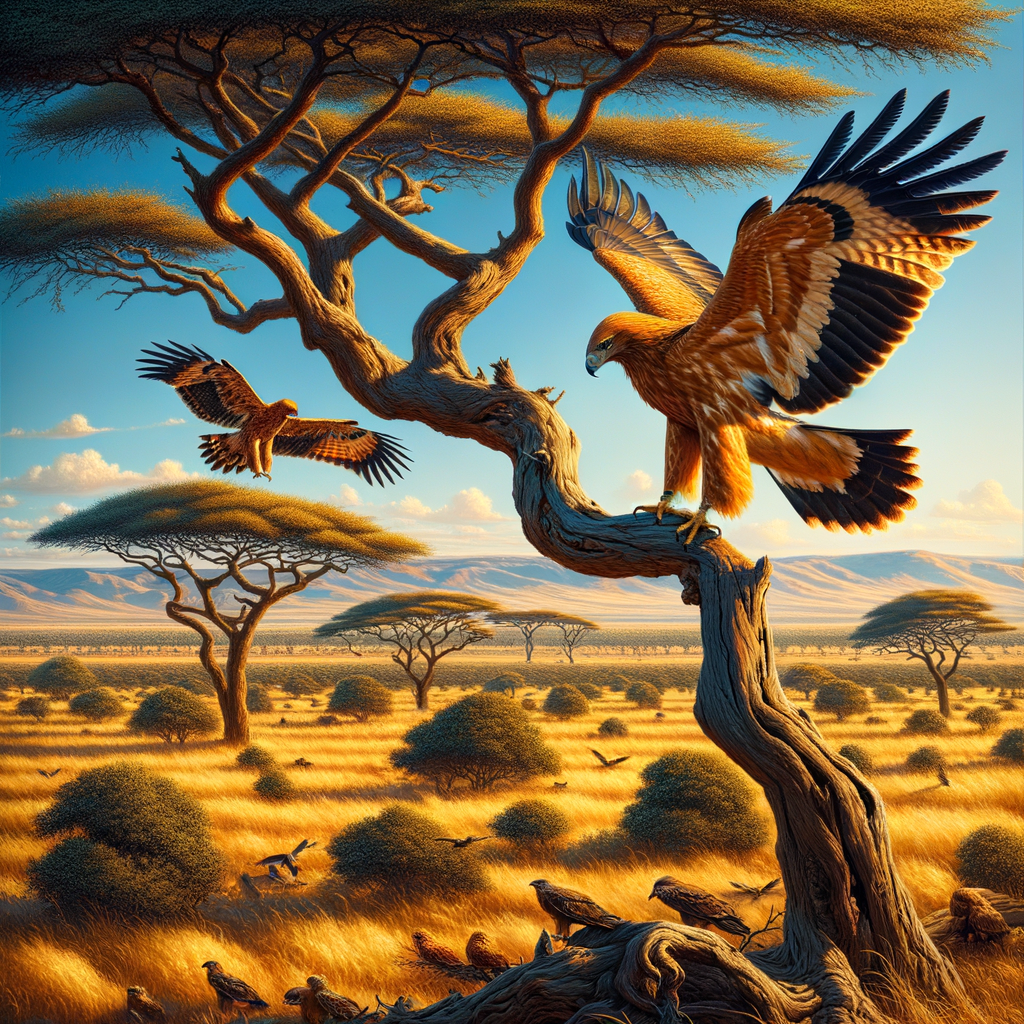Key Highlights from Conservation Education Through Falconry
- Unique Connection with Nature: Falconry offers a hands-on experience, creating a deep bond with birds of prey.
- Conservation Efforts: Falconry promotes the preservation of raptors and their habitats.
- Educational Value: Engaging in falconry teaches participants about wildlife, ecosystems, and environmental stewardship.
- Cultural Heritage: Falconry is a tradition with rich historical significance and cultural value.
- Lifelong Learning: Participation in falconry encourages continuous learning and a greater appreciation for nature.
- Wildlife Protection: Falconers often play a role in rescue, rehabilitation, and subsequent release of injured birds of prey.
- Sustainable Practice: Falconry advocates for responsible and ethical interactions with wildlife.
- Community Building: The practice fosters a community of like-minded individuals dedicated to conservation and education.
By joining Learn Falconry, individuals not only get a chance to engage directly with magnificent raptors but also contribute to broader conservation efforts, ensuring these majestic birds thrive for generations to come.
The Magic of Falconry and Conservation: Why It Matters
Imagine being in a lush, green Irish countryside, where the air is crisp, and everything feels alive and vibrant. Just like you can’t separate the shimmering green hills from the stories and legends that give them character, you can’t separate falconry from conservation and education. It’s like a beautiful Irish story that keeps getting passed down through generations, shaping the landscape and the people.
Welcome to Learn Falconry! We’re passionate about not just the thrill of training birds of prey, but also about helping these majestic creatures thrive in the wild. Our mission goes beyond the fascinating world of hunting with hawks and falcons; it’s about ensuring that these incredible birds continue to soar in our skies, keeping the environment balanced and vibrant.
In this article, you’ll discover how falconry intertwines with conservation efforts and education. It’s all about understanding the delicate bond between humans and nature, and how we can work together to make sure these awe-inspiring birds stay a part of our world for the long haul. Keep reading to find out why this ancient practice is more important now than ever!
The Importance of Conservation Education in Falconry
Falconry, one of the oldest hunting traditions, blends history and nature in a mesmerizing way. But did you know that it also plays a significant role in conservation education? Here at Learn Falconry, we believe that falconry isn’t just about training and hunting with birds of prey, it’s also a powerful tool for teaching conservation and inspiring future generations to protect our wildlife and natural habitats. Let’s delve deeper into how falconryâspecifically through education programsâcan support conservation efforts.
Falconry Education Programs: An Overview
Falconry education programs are designed to teach people about the art and history of falconry, as well as its importance in our ecosystem. These programs cover a variety of topics including the history of falconry, training techniques, and falcon health and nutrition. Beyond just the technical skills, these programs aim to foster a deeper appreciation and respect for nature. At Learn Falconry, we offer a range of resources to support both beginners and experienced falconers. For those new to falconry, check out our guide on getting started with falconry.
Teaching Conservation Through Falconry
Teaching conservation through falconry involves a hands-on approach to learning about wildlife. By working closely with falcons, participants gain firsthand experience and a deeper understanding of bird behavior and ecology. This experiential learning is invaluable for fostering a conservation mindset. Our programs encourage the protection and appreciation of not just falcons but all wildlife. Visit falconry and conservation to learn more about our initiatives.
The Role of Falconry in Conservation Education
Falconry plays a crucial role in conservation education. Historically, falconers have been stewards of raptor populations, often participating in breeding programs and habitat restoration projects. Through falconry, we educate the public about the importance of conservation efforts and the need to protect endangered species like the Peregrine Falcon. You can explore various conservation success stories on our site.
Practical Learning: Falconry Education in Action
Practical learning is a key aspect of our falconry education programs. Participants don’t just read about falconryâthey get to use real falconry equipment, such as hoods and telemetry devices. Our guides on falconry equipment and training a falcon provide comprehensive information on the tools and techniques used in the field. This hands-on experience enhances their understanding of the vital role falconers play in wildlife conservation.
Inspiring Conservation Efforts
Perhaps the most profound impact of our education programs is how they inspire action. By engaging with falconry, many participants develop a lasting passion for wildlife conservation. They become advocates for protecting raptors and their habitats, participating in activities such as habitat restoration and community-based conservation programs. To explore our community initiatives, visit community-based conservation.
At Learn Falconry, we are committed to not only preserving the ancient art of falconry but also using it as a force for good in conservation. Through our comprehensive education programs, we aim to inspire and equip a new generation of conservationists. Explore more about the role of falconry in conservation and our various educational offerings to start your journey today.
Discovering Conservation Education and Falconry: Learn Falconry’s Mission
At Learn Falconry, we believe in the power of conservation education and the ancient art of falconry to inspire and connect people with nature. Our programs are designed to provide immersive and engaging experiences while promoting wildlife conservation and responsible stewardship. Let’s dive into the specifics of our educational framework, conservation initiatives, and the art of falconry!
Conservation Education Programs in 2024
Funding and Grants:
Conservation education programs benefit from robust funding opportunities. These programs are supported by grants targeting diverse age groups and settings. For example, the Resource Enhancement and Protection (REAP) Act of 1989 provides approximately $350,000 annually for various conservation education initiatives.
Focus Areas:
Our conservation education programs aim to foster appreciation and understanding of natural resources. They emphasize teaching conservation practices and sustainability through hands-on, interactive learning opportunities. Programs such as outdoor education activities, facilitator training, professional development, and community outreach initiatives form our core offerings.
Partnerships and Collaborations:
Delivering high-quality, science-based education involves strong partnerships. We collaborate with government agencies, educational institutions, research stations, and community organizations to enhance the reach and impact of our programs.
Evaluating Conservation Education
Evaluation Tools:
To ensure the effectiveness of our conservation education initiatives, we employ various evaluation tools like Progress Markers and Chain of Outcomes forms. These tools help us measure specific behavior changes and knowledge gains in our participants.
Allocation of Funding:
Annual funding allocations are crucial to support diverse conservation education projects. Below is an example of how our funding is distributed:
| Initiative | Funding Allocation |
|---|---|
| Outdoor Education Activities | $100,000 |
| Facilitator Training | $50,000 |
| Community Outreach Initiatives | $200,000 |
| Professional Development | $100,000 |
| TOTAL | $450,000 |
Falconry in 2024: Education and Practice
Educational Programs:
Organizations like Learn Falconry provide a variety of educational programs, including live demonstrations and presentations. These programs are designed to educate audiences about falconry, raptors, and the importance of wildlife conservation. Our comprehensive training covers the proper care of birds and the requirements to become a falconer.
Licensing and Requirements:
To become a falconer, aspiring individuals must meet several requirements, including passing a falconry examination with a score of 80% or higher, holding a current year hunting license, and completing the Falconry License Application. The next falconry examination is scheduled for April 12, 2024, with a registration deadline of April 10, 2024.
Conservation Efforts in Falconry:
Falconry is closely tied to conservation efforts. At Learn Falconry, we emphasize the importance of conserving wildlife and practicing sustainable use of natural resources. Responsible falconry practices are crucial for maintaining ecological balance and protecting raptor species.
Falconry Events:
Our events, such as the 3rd Annual Homecoming at LRC BNB and the Raptor Program at the Library, offer opportunities for community engagement and learning. These events are scheduled for June 14-15, 2024, and at the Ohio County Library, respectively.
Courses and Training Initiatives
Generalized Linear and Mixed Models in Ecology and Conservation:
This course provides an overview of modern statistical analysis techniques relevant to ecological research and conservation. It covers linear models, generalized linear models, and mixed models, focusing on implementation, interpretation, and explanation of results.
Statistical Modeling for Conservation:
Aimed at modeling trends and population-habitat relationships using R software, this course includes multiple linear regression, linear mixed models, generalized linear models, and occupancy modeling to aid in model development and evaluation.
Learn Falconry’s mission is to bridge the gap between humans and nature through education and the art of falconry. By engaging with our programs, participants become informed advocates of conservation and responsible stewards of wildlife. Join us to discover the fascinating world of falconry and contribute to the preservation of our natural heritage!
Note: The information provided in this content is based on research and data pertinent to conservation education and falconry as of 2024.
Embracing Falconry for Conservation and Education
Falconry serves as a unique bridge between education and conservation, providing invaluable lessons about wildlife, ecosystems, and responsible stewardship of our natural resources. Through a combination of live demonstrations, hands-on experiences, and comprehensive educational programs, falconry not only captivates audiences but also instills a deep appreciation for raptors and other wildlife.
The steps to becoming a falconer, such as passing a rigorous examination and obtaining the required permits, emphasize the dedication and responsibility required in this ancient art. Educational initiatives like those offered by Learn Falconry ensure that aspiring falconers are well-prepared to care for their birds and contribute positively to conservation efforts.
Participation in falconry events and programs highlights the role of community involvement and continuous learning in fostering a culture of conservation. By experiencing falconry firsthand, individuals of all ages can develop a greater understanding of the intricacies of wildlife management and the importance of preserving biodiversity.
In conclusion, falconry is more than just a hobby; it is a powerful educational tool that promotes environmental awareness and conservation. By supporting and participating in falconry programs, we can all play a part in protecting our natural world for future generations. Join us at Learn Falconry and discover the fascinating world of raptors while contributing to a vital cause.
1. How Does Falconry Contribute to Conservation Efforts?
Falconry plays an important role in wildlife conservation. Falconers help with the breeding and reintroduction of endangered species back into the wild. They also participate in habitat restoration projects and work closely with scientists to monitor and protect bird populations. To learn more about the conservation efforts in falconry, visit our Falconry and Conservation page.
2. What Education Programs Are Available for Learning About Falconry?
At Learn Falconry, we offer a variety of educational programs for both beginners and advanced practitioners. These programs cover the history of falconry, training techniques, and the importance of ethical practice. We also provide resources to help new falconers get started. For more information on beginner falconry, check out our Falconry for Beginners section.
3. What Kind of Equipment Do I Need for Falconry?
Falconry requires specialized equipment to ensure the safety and well-being of both the falconer and the bird. This includes items like hoods, jesses, leashes, and gloves. You can find detailed information on the essential gear in our Falconry Equipment guide.
4. Are There Legal Requirements for Practicing Falconry?
Yes, falconry is regulated by laws to ensure ethical and responsible practice. These laws vary by country and region, including licensing requirements and conservation regulations. Our Legal Aspects of Falconry page provides more in-depth information about the legalities involved.
5. How Do Falcons Benefit from Falconry Training?
Training in falconry helps keep falcons healthy and active. It stimulates their natural hunting instincts and ensures they maintain strong physical conditioning. Falconers use positive reinforcement techniques to train their birds effectively. For more details on training methods, visit our Training a Falcon section.



